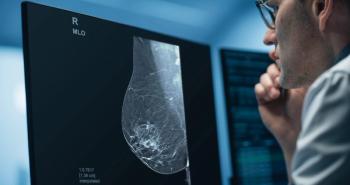
Firms explore digital mammography
Although mammography's resolution requirements have kept thatmodality bound to film, efforts are under way to bridge the digitalgap. Both Bennett X-ray and Lorad displayed works-in-progressdigital mammography technology at the 1991 RSNA exhibition.
Although mammography's resolution requirements have kept thatmodality bound to film, efforts are under way to bridge the digitalgap. Both Bennett X-ray and Lorad displayed works-in-progressdigital mammography technology at the 1991 RSNA exhibition.
Initial applications will be in guiding stereotactic fine-needlebiopsies, although the companies also see a future for digitalbreast exams.
Both companies use charge-coupled device (CCD) technology toacquire the digital images. Once acquired, contrast and brightnessin the image can be manipulated to better detect tumors. Digitalmammography should also help reduce radiation exposure.
"It enables you to get a real-time image, the major benefitof which is to reduce procedure time without taking additionalshots and exposing people to additional radiation," saidLorad president Hal Kirshner.
Bennett uses a 1024 x 1280-pixel screen for its digital mammographysystem, but has developed a 2000 x 2000-pixel monitor for thesystem that may give it the resolution needed for soft-copy diagnosis.Bennett can also combine standard digital radiography with itslower resolution requirements and digital mammography on the samesystem, said president Calvin Kleinman.
"Until we feel that the resolution of image is equal toor greater than film-screen mammography, we will not bring iton as a product," Kleinman said.
Newsletter
Stay at the forefront of radiology with the Diagnostic Imaging newsletter, delivering the latest news, clinical insights, and imaging advancements for today’s radiologists.




























